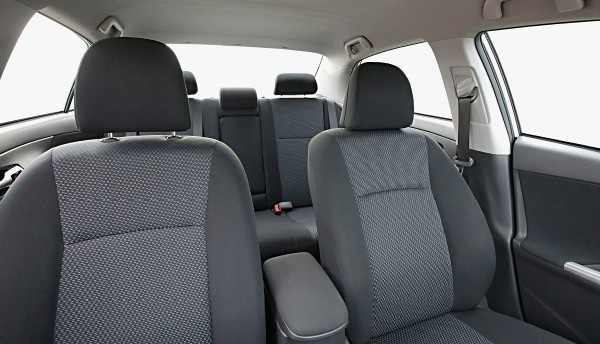
With light-vehicle production up 7.2 percent on the year-to-date and further investments by automakers and component suppliers, Mexico is currently booming as an automotive production base. Mazda, Toyota, Honda, Nissan, and the Infiniti-Daimler partnership have either announced or begun production since late 2013. Audi's plant construction has begun and is due online in 2016, while Kia announced a USD1-billion investment in August and last week Toyota admitted they are looking at locations for a new facility.
As a result, suppliers also continue to expand their facilities in the country as they seek to optimise their production footprint and support their OEM customers. There has been a marked increase in plant openings or investments by tier-1 automotive suppliers in the last year. The last month alone has seen the following announcements:
- Gestamp, a Spain-based supplier of metal components and structural systems to the automotive industry, has opened a new plant in Puebla, Mexico, with an investment of EUR55 million (USD71.1 million, 12 September 2014).. The other two plants, which produce metal components, bumpers and chassis for vehicles, are located in Aguascalientes and Toluca. The Puebla II plant will continue serving Gestamp’s existing OEM customers, including Chrysler, Fiat, Freightliner, General Motors (GM), Nissan and Volkswagen (VW).
- Automatic transmission manufacturer JATCO opened a second manufacturing facility in Aguascalientes, Mexico to boost production. The plant will manufacture two types of fuel-efficient continuously variable transmissions (CVT): JATCO CVT8 and the JATCO CVT8 HYBRID. These CVTs are equipped in some of Nissan’s models sold in North America. The plant will also manufacture automatic transmissions licensed from Daimler.
- ZF Sachs Suspension, a division of ZF Friedrichshafen, is spending about USD30 million to increase production capacity. The investment is going into capacity in El Salto in Jalisco, Mexico from 17 million shock absorbers is 2014, increasing to 30 million in 2018
- Axalta Coating Systems announced a USD10.5 million investment in its Tlalnepantla, Mexico, facility dedicated to producing resins for manufacturing coatings. The investment will expand the capability of the operations centre.
- Japan’s Sumitomo Electric Industries is investing JPY3 billion (USD28.5 million) into a new plant in Mexico. The plant will be constructed in Aguascalientes and is due to open in July 2016. Production will encompass transmission parts.
- UK-based automotive components supplier GKN plans to invest USD300 million to expand operations in Mexico. The investment will be made over three years and will expand annual production of driveshafts to 10 million units, up from the current capacity of 8 million units.
- Japan based automotive components supplier Tokai Rubber Industries (TRI) inaugurated a new MXN277 million (USD21.3 million, 8 July 2014) manufacturing plant in Querétaro, Mexicoin July to produce automotive anti-vibration rubber products.
- Korea based LG Innotek opened its first overseas plant in San Juan del Rio, Queretaro, Mexico in July to supply core automotive components, including motors for brakes, steering systems and gearshifts and last week announced it had chosen the Mexican plant to manufacture a "rare earth free" automotive dual- clutch transmission (DCT) motor.
Other tier-1 suppliers making investments this year include Continental, Denso, Robert Bosch, Hella, Faurecia Johnson Controls, JTEKT, Asahi Glass, Bridgestone and Hitachi Automotive. Shinano Kenshi, Magna, SRG Global and PPG.And it’s not just the tier-1 suppliers, Kobe Steel last week partnered with Shinsho Corporation, Metal One Corporation; Osaka Seiko Ltd; Mexico's Grupo Simec, S.A.B. de C.V. and O&K American Corporation to form a joint-venture in Mexico to process steel wire rod into CH steel wire for automotive suppliers in the country.
IHS Automotive forecasts that production in Mexico will see production of 3.24 million units in 2014 on its way towards 4.2 million units in 2017. As such, Mexico will eclipse Brazilian output in 2014. The two are forecast to run a tight race until 2017, when Mexico takes a firm lead. In 2014, production should increase in the third quarter, though output may be sequentially lower in the fourth 2014. We also see output surpassing 4.80 million light vehicle units in 2019 as capacity and component supply networks are widened and improved.
Mexico's strategy has created an export production base, taking advantage of the internal resources of the country as well as some transportation advantages. However, though the production and supply base is embedded in the country at this stage, there are still some structural issues for suppliers. Tier-1 suppliers still rely on imports as the local tier-2 and raw material supply base is still underdeveloped; an issue that Mexico’s trade associations know only too well.
The Industria Nacional de Autopartes (INA), the Mexican association of auto parts manufacturers, is pushing for a stronger tier-2 supplier base in the country. According to INA, Mexico produced USD76.8 billion worth of automotive parts in 2013. Imports during the year reached USD38.8 billion, up 7% y/y over 2012; imports mainly comprised items such as copper, aluminium, alloy cable and wire, tiers, seat and seat parts, harnesses, steering column parts, and disc brake mechanisms.
The issue may be a chronic one however. Mexico’s local suppliers have been hampered by a shortfall in the quality needed for international manufacturers, as well as the intense competition that has emerged with the arrival of major tier-1s over the last few years. The arrival of major global suppliers setting up production bases in the Mexico has seen them dominate at the expense of the local supplier industry, which has very few local Mexican tier-1 suppliers.
There is also growing pressure on component manufacturers in the US to match the prices offered by their counterparts based in China. This is leading many small or medium-sized suppliers that are unwilling or unable to shift production to China to move output to Mexico. For foreign tier-1s and other major suppliers though, there is now a real opportunity to locate new facilities in the region.








